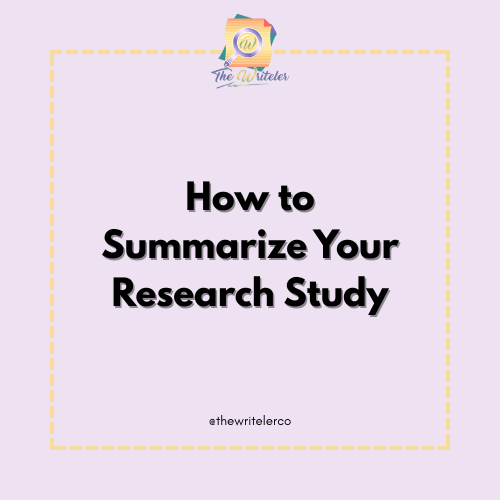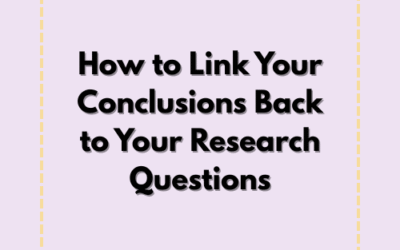Summarizing a research study is an art. Whether you’re writing a thesis, journal article, or simply posting your work online, knowing how to compress your full study into a digestible form—even chapter 5—is crucial.
Many researchers stumble here. After months (or years) of hard work, they find it harder to explain their study in 250 words than it was to write Chapter 5: Results and Discussion. If that sounds like you, this post will help.
Why Summarizing Is Just As Important As Chapter 5
Chapter 5 usually ties everything together: results, interpretations, and implications. But outside academia, nobody has time to read your whole thesis. People want the “what, why, how, and now what?”—all in one sitting.
Whether you’re applying for a grant, submitting to a journal, or pitching your work to potential collaborators, a strong summary will:
- Make your study understandable to non-experts
- Communicate its relevance quickly
- Showcase your ability to communicate clearly—a vital skill
Know the Goal of Your Research Summary (and How Chapter 5 Fits In)
The purpose of a summary is to boil down your entire study, including the essence of chapter 5, into a short, compelling piece. Ask yourself:
- Who is reading this? (A professor? A hiring manager? A peer reviewer?)
- What do they need to know to care?
- Should this be technical or simplified?
If you’re summarizing for an academic audience, you can be more precise—but even then, clarity is key. If it’s for a broader audience (like a LinkedIn post), include just enough context from Chapter 5 to show results and impact without overwhelming.
What to Include in Your Research Summary (Yes, Even Chapter 5!)
An effective research summary should answer five core questions:
1. What’s the Problem?
Summarize your research question in one to two sentences. This is the “why” behind your study.
Example: “Despite rising climate risks, small farmers in Southeast Asia still lack access to adaptive irrigation technology.”
2. What Was Your Goal or Hypothesis?
Clearly state what your study was trying to prove, understand, or uncover.
“This study aimed to assess whether community-led programs improved irrigation access.”
3. How Did You Conduct the Study?
Briefly describe your methodology—qualitative, quantitative, mixed methods? How many participants? What tools?
“We surveyed 200 farmers and conducted 30 in-depth interviews across three provinces.”
4. What Did You Find? (Here’s Where Chapter 5 Shines)
Highlight 1–3 major results from your Chapter 5 without overloading on stats.
“Findings from Chapter 5 revealed a 48% increase in irrigation use in communities with leadership training.”
5. What’s the Impact?
Always include Chapter 5’s conclusion or implications—why your study matters.
“These findings suggest that empowering local leaders may significantly improve rural resilience.”
How to Write It (Step-by-Step)
Even if Chapter 5 is already written, you still need a new structure for your summary. Here’s a method you can follow:
- Re-read your abstract and Chapter 5.
- Highlight 1–2 sentences from each major section (Intro, Methods, Results, Discussion).
- Combine them into a rough 250-word draft.
- Simplify technical phrases unless needed.
- Revise to remove repetition and passive voice.
- Ask: “Can someone understand this without reading the full paper?”
- Tweak it for the format (email pitch, journal abstract, social post).
Do’s and Don’ts of Summarizing Your Study (Including Chapter 5)
✅ Do:
- Use clear, active language
- Focus on the impact or takeaway of your Chapter 5 findings
- Keep one idea per sentence
- Stay within the word count (usually 150–300 words)
- Ask someone unfamiliar with your work to read it
❌ Don’t:
- Copy-paste long chunks from Chapter 5 or your abstract
- Use field-specific jargon unless required
- Include tables, graphs, or footnotes
- Ramble or explain things not directly related to your research question
Example Summary (Before and After Including Chapter 5)
❌ Weak Summary (no Chapter 5 insight):
“This study was about education. We looked at some classrooms and found things. The results were interesting.”
✅ Strong Summary (with Chapter 5 emphasis):
“This study explored how gamified learning apps impact reading comprehension in Grade 3 students in public schools. Using a 10-week intervention across five classrooms, we found that students using the app scored 23% higher in comprehension tests compared to the control group. Chapter 5 highlights how early digital engagement improves retention and reading speed, suggesting broader curriculum integration could be beneficial.”
Advanced Tips for Summarizing Chapter 5 Without Losing Depth

✍️ Need Help Writing or Summarizing Chapter 5?
Partner with The Writeler Co. Writing Services
Summarizing your research doesn’t have to be hard—or lonely. At The Writeler Co., we offer:
- Research summary polishing
- Chapter 5 rewrite and restructuring
- Full manuscript review and editing
- Abstract-to-summary conversion services
Whether you’re submitting to journals, presenting at a conference, or simplifying your thesis for a job application, we help you sound sharp, clear, and professional.
🔗 Contact us at The Writeler Co. and let us handle your words—so you can focus on the research.
Final Thoughts: Chapter 5 Is the Heart—The Summary Is the Face
A strong summary is your first impression. It tells people what you’ve done, why it matters, and whether they should care enough to keep reading.
While Chapter 5 holds the core insights of your research, your summary is the bridge between your deep work and the real world. Make it clear. Make it smart. And most of all—make it matter.





0 Comments